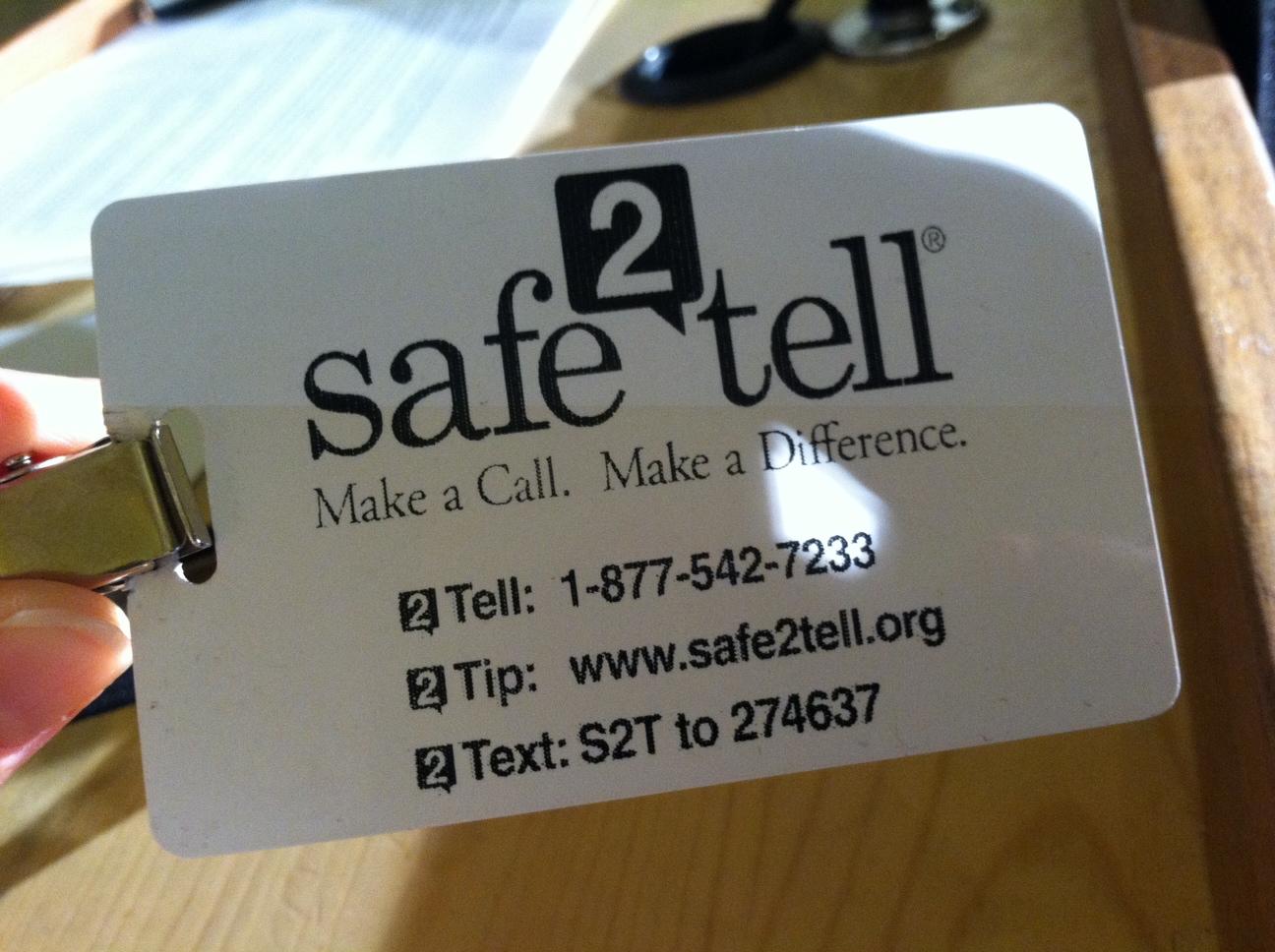
Colorado students are struggling with suicidal thoughts, bullying and drugs in increasing numbers, according to the Colorado Attorney General's Office annual report on Safe2Tell, an anonymous reporting platform for students and others to report safety concerns.
In fact, the annual report released Monday shows the highest number of reports ever since the program launched in 2004. There were 22,486 reports, a 16 percent increase in report volume compared to the previous year. The report covered the 2022-23 school year.
“It is a mixed message because on one hand people know about Safe2Tell, they're using Safe2Tell,” said Attorney General Phil Weiser. “On the other hand, we have a real challenge in terms of threats to school safety.”
Safe2Tell’s goal is to encourage and empower youth to make a report when a trusted adult isn’t available.
Suicide threats remained Safe2Tell’s most frequently reported category, accounting for 13 percent of all reports made in the past school year.
“We need people to know if you're not feeling OK, that's OK, but you're not alone and don't suffer alone,” said Weiser. “Please let us connect you to help. There's a lot of options available for young people. We want to make sure they're benefiting from mental health services.”
Other top report categories included bullying, school complaints, drugs, and threats, which together with suicide threats account for 42 percent of all reports.
Some of the Safe2Tell reports from last school year include a student reporting another student threatened to harm students at school. Authorities found the student possessed a gun, the student was arrested and a threat assessment was conducted. Other examples include reports that a student took an excessive number of pills because they were depressed, and reports of a student selling illegal drugs to other students. In all cases, authorities or officials intervened, taking disciplinary action or providing counseling.
What’s going on with teens?
Weiser said social media is part of the reason for the rise in bullying, anxiety and depression in teens. Last month Colorado and 32 other states sued Meta, the parent company of Instagram and Facebook, claiming the platforms can be addictive and harm children’s mental health.
But he said what underlies the youth mental health crisis is a constellation of factors.
“It's also clear the pandemic was really hard for young people and the state of our democracy, the rise in gun violence, the challenges around climate change, all leave young people feeling that the state of our world is not in a good place and a lot of them are internalizing that. …Young people, I believe, put more pressure on themselves today than I believe I did.”
Some of that pressure also comes from parents. Weiser added that it’s much harder to be a young person today.
The report shows students appear to be more comfortable seeking help when they are in a mental health crisis. The program received 140 reports by persons concerned about their own mental health relating to depression, suicide and self-harm. That’s up 70 percent from the previous year. Safe2Tell offers reporters the option to connect with Colorado Crisis Services. Six of the 140 reports were transferred, 52 received counseling services and 7 resulted in holds or hospitalization.
A new addition to Safe2Tell is the tracking of two-way dialogue within reports, a statistic that shows how often someone making a report responds to an analyst’s follow-up questions. About one in four reports included two-way dialogue. The rest of the people ended the chat. Officials say they hope tracking the conversations will give them a deeper understanding of reported issues and possibly better solutions.
The program has also expanded training for staff and students in schools, for law enforcement and in the community. Student ambassadors in several school districts design projects to increase awareness of Safe2Tell in their schools. They also contributed ideas for social media messaging and conducted peer-to-peer presentations in their schools.
Safe2Tell officials hope to increase virtual training for school teams and law enforcement, continue educating students on the proper use of the program, and educating teachers on how to use Safe2Tell.
More stories about students and mental health
- Stress, social media, pandemic are taking a heavy toll on Colorado kids’ mental health, according to annual report
- New school in Aurora combines education and mental health treatment for struggling students
- Aspen School District sues social media companies over impact on youth mental health
- In Parkland’s Wake, Colorado Safe2Tell Could Be A Model To Break The ‘Code Of Silence’









